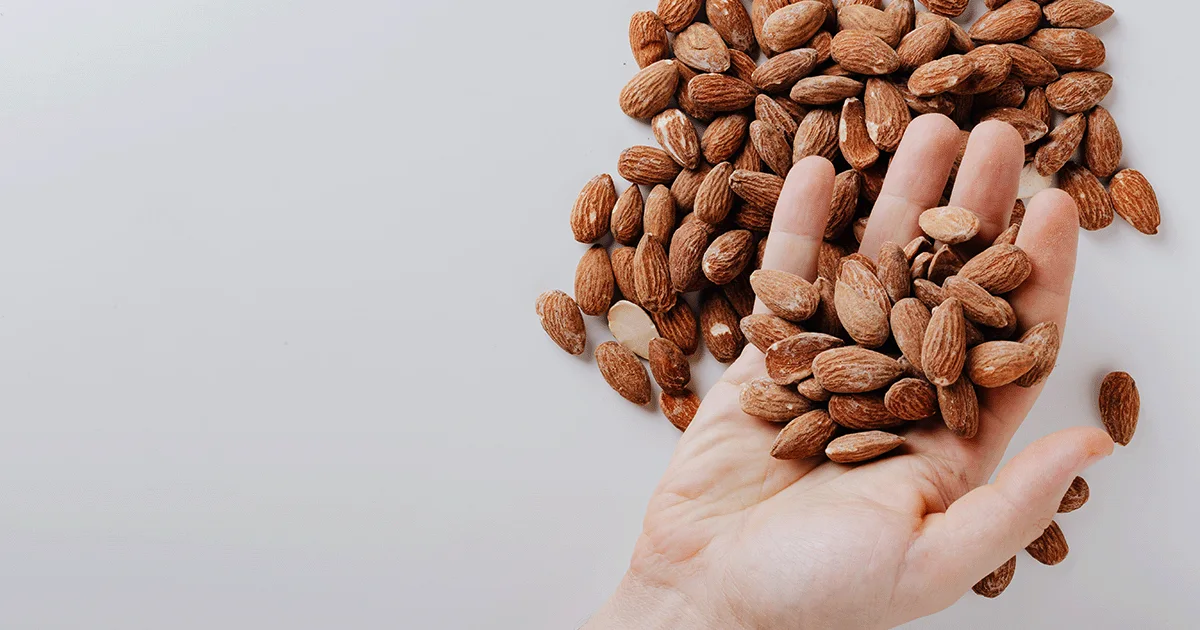Here's what we'll cover
Here's what we'll cover
Vaginal dryness affects many women, especially after menopause, but it’s not often discussed. That’s a shame because vaginal dryness can cause unnecessary discomfort for many women, and effective treatments are available. Let’s explore vaginal dryness and find out what you can do about it.
What causes vaginal dryness?
Vaginal dryness typically goes along with vaginal atrophy, in which the walls of the vagina become thinner and drier, normally during menopause. About 15% of women have symptoms of vaginal atrophy (like dryness and irritation) before menopause, and 40–57% of women have them after menopause (Bleibel, 2021).
These changes are caused by lowered estrogen levels, the “female” hormone produced by the ovaries. Menopause causes a 95% reduction in estrogen production. Before menopause, vaginal walls are plump, elastic, red in color, and moist. During perimenopause and menopause, vaginal walls become thinner and less elastic. They lose their color, turning pale pink or blue (Bleibel, 2021). As estrogen levels decrease, vaginal secretions decrease and vaginal dryness sets in. Women who smoke tend to go through menopause earlier than those who don’t (Wesselink, 2019).
Besides menopause, other possible causes of vaginal dryness and atrophy include (Faubion, 2017; Naumova, 2018; Woelber, 2020):
Breastfeeding
Surgical removal of the ovaries
Disorders of the ovaries that stop them from producing estrogen
Some glandular disorders (such as hypothyroidism)
Sjögren syndrome
Anti-estrogen medications like those used to treat endometriosis and uterine fibroids and to keep breast cancer from coming back
Other medications, including antihistamines and antidepressants, can dry out vaginal tissues.
Smoking and douching can also dry the delicate vaginal tissues (Goncharenko, 2019).
What are the symptoms of vaginal dryness?
In addition to dryness, there can be burning sensations, irritation, itching, vaginal bleeding, pain during sex, bleeding after sex, discomfort during physical activities, and painful urination (Faubion, 2017; Woelber, 2020; Bleibel, 2021). Women with vaginal atrophy may also experience other symptoms of lowered estrogen, such as hot flashes, disturbed sleep, night sweats, mood changes, urinary tract infections (UTIs), urinary incontinence, acne, and unwanted hair growth.
Vaginal dryness during sex
Along with vaginal dryness, low estrogen levels can also cause a tightening of the opening to the vagina and a narrowing and shortening of the vagina itself. This can make sex uncomfortable and even painful, so some women with vaginal atrophy may start to avoid having sex. But this creates a vicious circle because sex helps with vaginal atrophy. The more you have sex, the less vaginal atrophy you’re likely to have.
How are vaginal dryness and atrophy diagnosed?
Over 50% of women with vaginal atrophy have never used any treatment for it, and 70% of those women haven’t discussed vaginal dryness with their healthcare provider (Kingsberg, 2017). That’s a shame because effective treatments are available.
To diagnose vaginal atrophy, a healthcare provider will usually take a complete medical history to rule out vaginal infections, UTIs, or other conditions. The history will generally include questions about your sexual activity.
Your provider may order lab tests to rule out vaginal infections and UTIs that might be causing symptoms like irritation or painful urination. They won’t usually measure your estrogen levels because, currently, tests are too inaccurate to be useful (Demers, 2015). They may check your vaginal pH and may also measure your vaginal wall to see if there’s been a loss of lining cells (Balica, 2019). The healthcare provider may check the vagina for fragile tissue, pale color, lack of elasticity, shortened vaginal length, and dryness (Bleibel, 2021).
Vaginal dryness treatment
Treatments for vaginal dryness fall into two categories: nonhormonal and hormonal. Nonhormonal treatment is the first line of approach and might be all that’s needed to relieve vaginal dryness.
Nonhormonal vaginal dryness treatments
Nonhormonal treatments for vaginal dryness include sexual lubricants (lube) and topical vaginal moisturizers and lubricants.
At the low end of the scale, you can use lube to help provide moisture during penetrative sex. If you do, it’s probably best to use a water-based lube. Silicone- and oil-based lubes may be irritating to dry tissues.
Some over-the-counter (OTC) vaginal moisturizers and lubricants help recreate the physiological conditions of the natural vaginal environment. As estrogen levels decrease, the vagina becomes less acidic and more alkaline (pH >5), which can put a woman at risk of recurrent vaginal infections and UTIs (Naumova, 2018). Some vaginal moisturizers restore the acidic pH of the vagina to help recover the normal vaginal microbiome. This, in turn, increases natural vaginal secretions and lubrication, along with relieving symptoms of dryness (Bleibel, 2021).
Hormonal vaginal dryness treatments
Hormonal treatment may be used as a second line of treatment or in addition to nonhormonal treatment.
Hormonal replacement therapy (HRT) can be systemic (meaning it affects your whole body) or localized (meaning it’s applied to and affects a targeted area). Studies show that systemic HRT relieves symptoms in about 75% of cases, whereas localized therapy is more effective and works in 80–90% of cases. Localized therapy is also considered much safer than systemic hormonal therapy, so it’s generally the preferred approach to treating vaginal dryness unless other symptoms of menopause are present. Low-dose localized estrogen therapy doesn’t seem to increase total systemic estrogen levels (Bleibel, 2021).
Localized hormonal therapy for vaginal dryness
Localized hormonal treatment for vaginal dryness comes in a variety of forms (Lethaby, 2016; Naumova, 2018):
Topical estrogen, including vaginal creams (usually applied daily) and tablets/capsules (for more accurate dosing)
Estrogen-releasing vaginal rings, which release small amounts of estrogen daily
Vaginal dehydroepiandrosterone (DHEA), a form of testosterone
These treatments are about equally effective in relieving vaginal atrophy symptoms (Lethaby, 2016).
Localized estrogen treatments have an excellent safety profile and a very low risk of causing endometrial tissue overgrowth in healthy women. However, breast cancer or endometrial cancer survivors are at greater risk because their tissues may be more sensitive to lower levels of estrogen, which may increase their risk for new or recurring cancer.
Talk to your healthcare provider if you’re a breast cancer or endometrial cancer survivor and are still interested in this approach. If they use vaginal estrogen therapy, they will likely use it at lower doses (Hill, 2016; Naumova, 2018; Bleibel, 2021).
Systemic hormonal therapy for vaginal dryness
Systemic hormonal therapy, or oral estrogen replacement, is usually for women who are having systemic symptoms of menopause (like hot flashes and night sweats) in addition to vaginal dryness. Hormonal treatment can include estrogen-progestins, or just estrogen in women who have had a hysterectomy.
Systemic HRT can be very effective. It can stimulate new blood vessel growth in the vaginal tissue, normalize the vaginal pH, and increase lubrication (Bleibel, 2021).
On the other hand, systemic hormonal therapy is inappropriate for some women. Studies have shown that it can increase the risk of invasive breast cancer, coronary heart disease, stroke, and blood clots causing deep venous thrombosis (DVT) or pulmonary embolism (PE). You shouldn’t have systemic HRT if you have a history of breast cancer or another estrogen-based cancer, DVT or PE, a blood clotting disorder, heart attack or stroke, or chronic liver disease (Harper-Harrison, 2021).
Other medical treatments for vaginal dryness
Selective estrogen receptor modulators (SERMs)—These can help restore vaginal tissues while having minimal to no effect on organs affected by estrogen (Alvisi, 2019).
Laser and radiofrequency therapy—Laser therapy may stimulate the growth of new blood vessels in the vagina and restore moisture and elasticity (Gambacciani, 2017).
Vaginal dilators—These can be used by women who haven’t been helped by moisturizers and lubricants and who can’t take estrogen. Dilators come in different sizes and help to stretch the vagina.
Other treatments for vaginal dryness
Sex—Having penetrative sex can stimulate the growth of new cells in the vaginal lining and increase lubrication (Alvisi, 2019).
Kegels—Doing Kegel exercises, in which you repeatedly tighten your pelvic floor muscles, stimulates blood flow to the vaginal tissues and can increase vaginal lubrication and moisture.
Herbal treatments—There’s a long list of herbs that have been said to help with vaginal atrophy, but there’s a shortage of high-quality studies on this subject. However, some studies have shown that the following herbs are effective in treating menopausal symptoms: lemon balm (Melissa officinalis), Valerina officinalis, black cohosh (Cimicifuga racemosa), fenugreek (Trigonella foenum-graecum), black cumin (Nigella sativa), vitex (Vitex agnus-castus), fennel (Foeniculum vulgare), evening primrose (Oenothera biennis), Ginkgo biloba, alfalfa (Medicago sativa), Hypericum perforatum, Panax ginseng, Pimpinella anisum, licorice (Glycyrrhiza glabra), Passiflora incarnata, red clover (Trifolium pratense), Glycine soja, and dong quai (Angelica sinensis) (Kargozar,2017; Lin, 2017). See an experienced herbal practitioner if you’re interested in an herbal approach.
As you can see, there are many treatments available to you if you’re experiencing vaginal dryness. Your healthcare provider can suggest the best option for you.
DISCLAIMER
If you have any medical questions or concerns, please talk to your healthcare provider. The articles on Health Guide are underpinned by peer-reviewed research and information drawn from medical societies and governmental agencies. However, they are not a substitute for professional medical advice, diagnosis, or treatment.
Alvisi, S., Gava, G., Orsili, I., Giacomelli, G., Baldassarre, M., Seracchioli, R., & Meriggiola, M. C. (2019). Vaginal health in menopausal women. Medicina (Kaunas, Lithuania) , 55 (10), 615. doi: 10.3390/medicina55100615. Retrieved from https://www.ncbi.nlm.nih.gov/pmc/articles/PMC6843679/
Balica, A. C., Cooper, A. M., McKevitt, M. K., Schertz, K., Wald-Spielman, D., Egan, S., & Bachmann, G. A. (2019). Dyspareunia related to GSM: association of total vaginal thickness via transabdominal ultrasound. The Journal of Sexual Medicine , 16 (12), 2038–2042. doi: 10.1016/j.jsxm.2019.08.019. Retrieved from https://pubmed.ncbi.nlm.nih.gov/31542351/
Bleibel, B. & Nguyen, H. (2021). Vaginal atrophy. [Updated Jul 7, 2021]. In: StatPearls [Internet]. Retrieved on Jan. 26, 2022 from https://www.ncbi.nlm.nih.gov/books/NBK559297/
Demers, L. M., Hankinson, S. E., Haymond, S., Key, T., Rosner, W., Santen, R. J., et al. (2015). Measuring estrogen exposure and metabolism: workshop recommendations on clinical issues. The Journal of Clinical Endocrinology and Metabolism , 100 (6), 2165–2170. doi: 10.1210/jc.2015-1040. Retrieved from https://www.ncbi.nlm.nih.gov/pmc/articles/PMC5393513/
Faubion, S. S., Sood, R., & Kapoor, E. (2017). Genitourinary syndrome of menopause: management strategies for the clinician. Mayo Clinic Proceedings , 92 (12), 1842–1849. doi: 10.1016/j.mayocp.2017.08.019. Retrieved from https://pubmed.ncbi.nlm.nih.gov/29202940/
Gambacciani, M. & Palacios, S. (2017). Laser therapy for the restoration of vaginal function. Maturitas , 99 , 10–15. doi: 10.1016/j.maturitas.2017.01.012. Retrieved from https://pubmed.ncbi.nlm.nih.gov/28364861/
Goncharenko, V., Bubnov, R., Polivka, J., Jr, Zubor, P., Biringer, K., Bielik, T., et al. (2019). Vaginal dryness: individualised patient profiles, risks and mitigating measures. The EPMA Journal , 10 (1), 73–79. doi: 10.1007/s13167-019-00164-3. Retrieved from https://www.ncbi.nlm.nih.gov/pmc/articles/PMC6459457/
Harper-Harrison, G. & Shanahan, M.M. (2021). Hormone replacement therapy. [Updated Jun 3, 2021]. In: StatPearls [Internet]. Retrieved on Jan. 26, 2022 from https://www.ncbi.nlm.nih.gov/books/NBK493191/
Hill, D. A., Crider, M., & Hill, S. R. (2016). Hormone therapy and other treatments for symptoms of menopause. American Family Physician , 94 (11), 884–889. Retrieved from https://pubme d .ncbi.nlm.nih.gov/27929271/
Kargozar, R., Azizi, H., & Salari, R. (2017). A review of effective herbal medicines in controlling menopausal symptoms. Electronic Physician , 9 (11), 5826–5833. doi: 10.19082/5826. Retrieved from https://pubmed.ncbi.nlm.nih.gov/29403626/
Kingsberg, S. A., Krychman, M., Graham, S., Bernick, B., & Mirkin, S. (2017). The Women's EMPOWER Survey: Identifying women's perceptions on vulvar and vaginal atrophy and its treatment. Journal of Sexual Medicine, 14 (3), 413–424. doi: 10.1016/j.jsxm.2017.01.010. Retrieved from https://pubmed.ncbi.nlm.nih.gov/28202320/
Lethaby, A., Ayeleke, R. O., & Roberts, H. (2016). Local oestrogen for vaginal atrophy in postmenopausal women. The Cochrane Database of Systematic Reviews , 2016 (8), CD001500. doi: 10.1002/14651858.CD001500.pub3. Retrieved from https://www.ncbi.nlm.nih.gov/pmc/articles/PMC7076628/
Lin, H. Q., Gong, A. G., Wang, H. Y., Duan, R., Dong, T. T., Zhao, K. J., & Tsim, K. W. (2017). Danggui buxue tang ( Astragali radix and Angelicae sinensis radix ) for menopausal symptoms: a review. Journal of Ethnopharmacology , 199 , 205–210. doi: 10.1016/j.jep.2017.01.044. Retrieved from https://pubmed.ncbi.nlm.nih.gov/28163116/
Naumova, I. & Castelo-Branco, C. (2018). Current treatment options for postmenopausal vaginal atrophy. International Journal of Women's Health, 10, 387–395. doi: 10.2147/IJWH.S158913. Retrieved from https://www.ncbi.nlm.nih.gov/pmc/articles/PMC6074805/
Wesselink, A. K., Hatch, E. E., Rothman, K. J., Mikkelsen, E. M., Aschengrau, A., & Wise, L. A. (2019). Prospective study of cigarette smoking and fecundability. Human Reproduction (Oxford, England) , 34 (3), 558–567. doi: 10.1093/humrep/dey372. Retrieved from https://www.n c bi.nlm.nih.gov/pmc/articles/PMC6389864/
Woelber, L., Prieske, K., Mendling, W., Schmalfeldt, B., Tietz, H. J., & Jaeger, A. (2020). Vulvar pruritus— causes, diagnosis and therapeutic approach. Deutsches Arzteblatt international, 116 (8), 126–133. doi: 10.3238/arztebl.2020.0126. Retrieved from https://www.ncbi.nlm.nih.gov/pmc/articles/PMC7081372/












